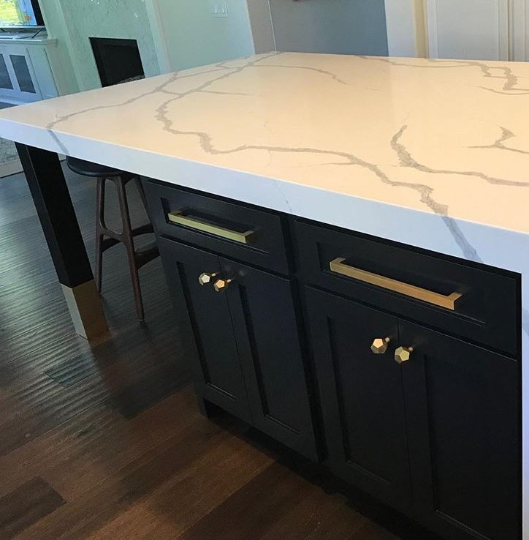Boost Performance and Style Making Use Of High Quality Legs For Kitchen Island
Boost Performance and Style Making Use Of High Quality Legs For Kitchen Island
Blog Article
Essential Aspects to Consider When Choosing Legs For Kitchen Island
Selecting the ideal legs for a cooking area island includes a cautious analysis of multiple elements that can considerably influence both performance and visual appeal. As we discover these elements, it becomes clear that each decision can have far-reaching ramifications for the overall kitchen area experience.
Product Options
When selecting legs for a kitchen island, recognizing the various product choices is vital for achieving both visual appeal and structural integrity (Legs For Kitchen Island). The selection of product significantly affects not only the sturdiness of the island however likewise its overall layout and capability
Metal legs, commonly made from stainless steel or wrought iron, contribute a contemporary and industrial feeling while making sure toughness and stability. These materials are immune to wear and can sustain significant weight, making them ideal for bigger islands.
One more option is engineered materials, like MDF or plywood, which can be much more affordable while still providing a series of finishes. However, they may not provide the exact same level of stability as solid wood or metal. Last but not least, materials such as acrylic or glass can create a modern look, though they may require added support to ensure stability.
Inevitably, the selection of material for cooking area island legs must line up with the wanted capability and the overall motif of the cooking area.
Style and Layout

When thinking about design, the shape and finish of the legs are essential. Tapered legs can supply a feeling of lightness and beauty, while thicker, more durable legs can communicate toughness and security. Furthermore, the finish-- be it repainted, tarnished, or all-natural-- need to match the kitchen cabinetry and kitchen counter products to create a unified look.
In addition, the style of the legs can also show personal taste. Custom-made or attractive legs, such as those including intricate makings or special geometric shapes, can function as focal factors, adding personality and individuality to the kitchen area. Inevitably, the ideal selection will not just improve performance however additionally elevate the aesthetic appeal, making the cooking area island a standout function of the home.
Height Considerations
Choosing the proper height for kitchen area island legs is important, as it directly impacts both performance and comfort. The typical height for a kitchen island typically varies from 36 to 42 inches, aligning with typical countertop elevations.

It is likewise crucial to represent customers' elevations and choices. Customizing the elevation can make sure a comfy experience for all member of the family, making the kitchen island a much more pleasurable and functional space.
Weight Assistance
Making sure adequate weight assistance for kitchen area island legs is important for both security and functionality. The kitchen area island often serves several objectives, consisting of cooking, eating, and extra storage space, requiring a robust support framework. When picking legs, it is crucial to consider the overall weight ability called for based upon the island's planned use and the materials that will be positioned on it.
The selection of product for the legs plays a considerable role in their weight-bearing capabilities. Solid timber, steel, and sturdy compounds normally supply remarkable toughness compared to lighter products. Furthermore, the design of the legs-- whether they are straight, tapered, or have a pedestal kind-- can affect their capability to disperse weight efficiently across the framework.
Moreover, the leg positioning must be tactically intended to improve stability. Legs placed at the corners or with a larger base can better sustain much heavier loads. Constantly seek advice from the supplier's specs pertaining to lots limitations to ensure that the legs can maintain the intended weight without compromising security. In recap, choosing kitchen area island legs with adequate weight support is vital for producing a risk-free and useful culinary space.
Setup and Maintenance
Proper installation and maintenance of cooking area island legs are important for ensuring longevity and security. This often includes protecting the legs to the island base utilizing proper bolts, ensuring that the legs are degree and straightened.
As soon as installed, regular maintenance is essential to preserve the integrity and appearance of the legs - Legs For Kitchen Island. For wood legs, periodic cleaning with a wet towel and application of ideal wood polish can prevent dampness damage and maintain their surface. Steel legs might need a mild cleaning service to eliminate oil and gunk, followed by a completely dry towel to avoid corrosion formation
Additionally, examine the legs consistently for signs of wear or damage, such as splits or loosened joints. Tightening screws or bolts as required can likewise prolong the lifespan of the legs. By sticking to these installment and maintenance practices, house owners can guarantee that their kitchen area island continues to be strong and aesthetically appealing for many years ahead.
Final Thought

Visual comprehensibility is paramount in picking the design and design of legs for a kitchen island, as these elements considerably affect the general setting of the room. Conical legs can supply a sense of agility and sophistication, while thicker, more durable legs can communicate toughness and security.Selecting the suitable elevation for kitchen island legs is vital, as it directly affects both functionality and convenience. In recap, selecting kitchen area island legs with ample weight support is important for creating a practical and safe culinary space.
In verdict, selecting legs for a kitchen area island demands cautious consideration of different aspects, consisting of material options, style, elevation, weight support, and installment.
Report this page